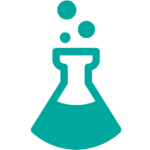
Here at Intellitonic, we specialize in digital marketing for small and medium-sized businesses and nonprofits. Due to marketing’s heightened importance in our increasingly digital world, we created this guide to outline the basics of digital marketing.
Small businesses and nonprofits benefit greatly from digital marketing, regardless of industry. You might still be able to thrive without up-to-date technology, but always ask yourself: What Would Prometheus Do? We gather around the World Wide Web like the fire of yore – so if you put the technological advances to good use, your overall marketing efforts will be pretty lit.
We can essentially divide digital marketing between paid and unpaid strategies: pay-per-click (PPC) and organic Search Engine Optimization (SEO). PPC takes the form of paid ad campaigns hosted by a search engine’s own services, such as Google AdWords, Facebook, or LinkedIn. Organic SEO takes the form of blogs, link building, and keyword research all designed to raise your site’s ranking in the search engine results pages (SERPs). Both strategies benefit from keyword research well-attuned to users’ search habits. Additionally, social media can improve your website ranking through both paid and unpaid campaigns.
Your use of either strategy should depend on your budget, time, and resources – but most importantly, on your organizational goals. These may include driving sales, donations, or community participation and awareness, depending on whether you run a small business or nonprofit. Formulating these goals ought to be the first step before choosing your approach to digital marketing, unless you specialize in reverse-engineering.
You may consider contracting with a specialist if digital marketing bears no relation to your business or skillsets. The popular quote about not judging a fish by its ability to fly holds true, even though Einstein didn’t really say it. We also appreciate Stephen Covey’s quote about how “the main thing is to keep the main thing the main thing”. Whether you outsource or do it yourself, this guide aims at making digital marketing compatible with your main thing.
Website Building
As a wise man (David Byrne) once said: you may ask yourself, how do I work this? When “this” is digital marketing, the answer is to create a solid website. All of your SEO and PPC operations lead back to it eventually. Single-page sites work if you desire a minimalist aesthetic, but multi-page sites provide more SEO and PPC opportunities. More pages means more optimizable metadata (tags, alt text, meta descriptions, etc.) and places where users may land, after all. Single-page sites have quicker and stronger rankings for smaller pools of keywords, because all backlinks lead to the same page, but multi-page sites benefit more from obscure, “long tail” keywords.
Hosting the site on an open source content management system (CMS) has advantages over a proprietary CMS. For instance, it means you can direct questions to online guides instead of the designer whenever you feel like a dog walking itself. Open source examples include WordPress, Shopify, and Squarespace; we recommend WordPress for its wide audience and extensive SEO tools. For fear of insecurities such as phishing and viruses, Google has started catching and quarantining (i.e. penalizing) “HTTP” addresses. Use an “HTTPS” address instead, and they’ll mark you as secure.
As we’ll elaborate in the analytics chapter, you should constantly improve the site by measuring its performance. You can track conversions (see Glossary below) in Google AdWords and track goals you set in Google Analytics… including click-tracking for the contact information you ought to make clickable on the site. It’s a fact of life that we want to close slow-loading sites out of impatience, so using speed-auditors like Webpagetest.org or Chrome’s built-in auditor (Lighthouse) makes you a pro life-hacker. Aim for a speed of 1 second or so, and you’ll get more conversions, as empirical studies on site speed have shown.
Users and search engines both appreciate frequent site updates, especially when they create more landing pages. Blogs provide one new landing page per post, in addition to letting you share useful information and quirky images. Need a sign that blogging will improve your site’s personality and aesthetic?
Glossary of Digital Marketing Terms
Analytics platforms measure sites’ performance based on the following stats:
- Average CPC: short for average cost-per-click, the total number of clicks on an ad divided by the total cost of clicks.
- Citation Flow: MajesticSEO score between 0 and 100, ranking how influential your URL is by the number of sites that link to it.
- Clicks: every instance of a user clicking on your ad counts as one of these.
- Conversions: every action a user takes to benefit your site after clicking the ad, such as ordering products or subscribing, counts as one of these.
- Conversion Rate: the number of conversions divided by the number of clicks on a particular ad within a given time frame.
- Conversion Value: sum of all conversion values belonging to particular campaigns, ad groups, keywords or ads.
- Cost: total advertising costs charged within a given date range.
- CTR: short for click-through-rate, the number of clicks on an ad divided by the number of impressions. We consider 1-3% to be a high CTR that indicates keyword relevance.
- External Backlink: a link to your website from another website. Acquiring these improves your site’s search ranking.
- Impressions: every appearance of your ad in the SERPs counts as one of these.
- Trust Flow: MajesticSEO score between 0 and 100, ranking how trustworthy your URL is by the trustworthiness of sites that link to it.
For other items and extended definitions, see the Intellitonic Glossary.
The chapters of this guide originated as Intellitonic blog posts on Market Analysis, PPC, Guides to SEO, Link Building, Blogs, and Social Media.
